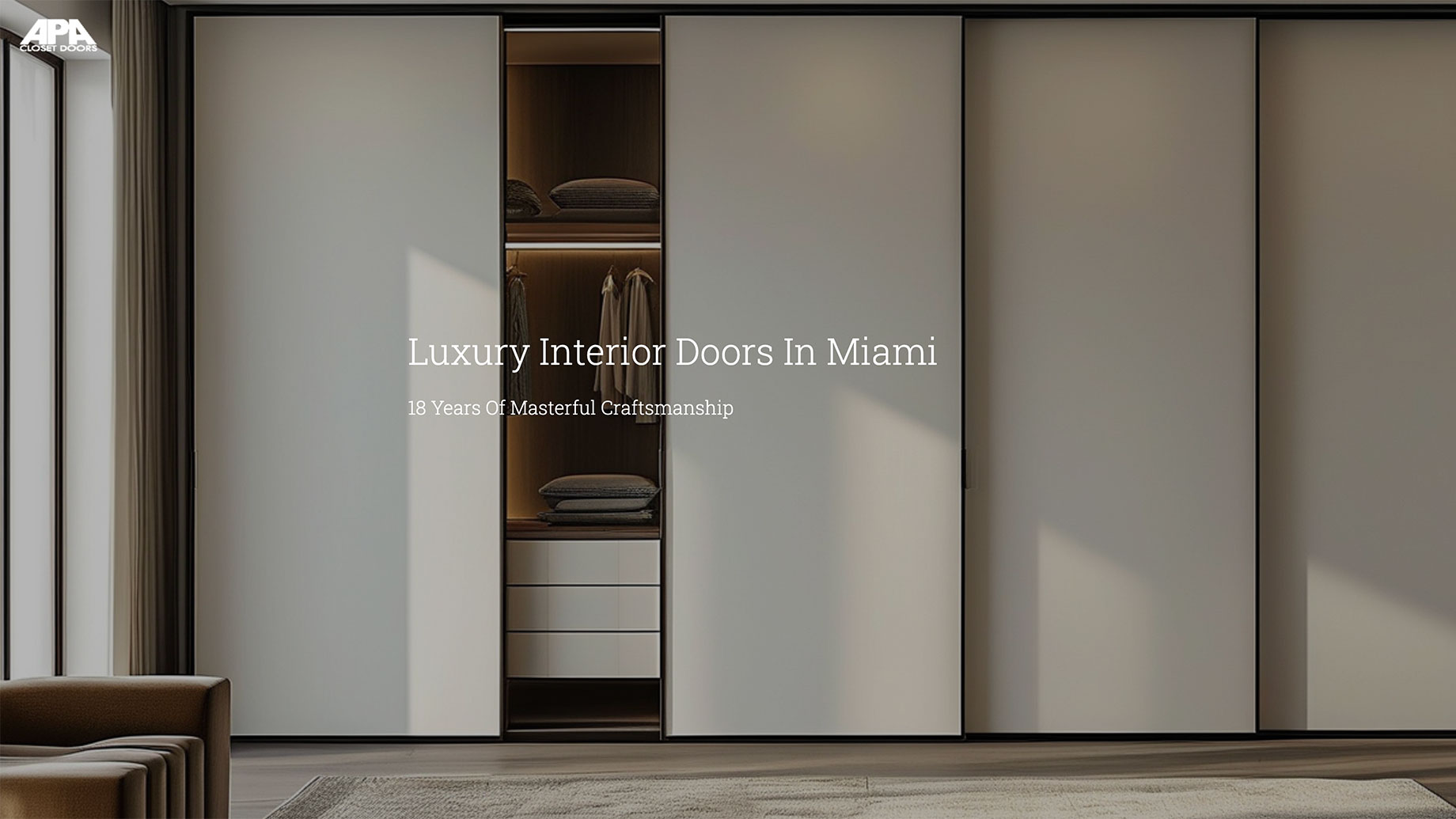
A look at APA Closet Doors’ digital evolution as a model for modern design businesses
In the luxury design world, your website often becomes the first showroom your potential client steps into. Whether you’re an architect, contractor, or interior door specialist, the visual and functional impact of your online presence matters—more than ever. A recent revamp by APA Closet Doors illustrates how interior design-focused businesses can reimagine their websites to attract a more discerning, design-conscious audience.
The Digital Showroom: Where First Impressions Count
For any brand working in interior design, architecture, or high-end custom products, the website is no longer just a catalog—it’s a user experience. Customers expect a site to reflect the quality and professionalism of the services being offered. In APA Closet Doors’ case, their redesigned platform integrates clean aesthetics, intuitive navigation, and purpose-built forms that don’t just look elegant—they guide conversions.
Their site now emphasizes:
- High-quality visuals that showcase texture, form, and craftsmanship.
- Clearly segmented service pages to reduce decision fatigue.
- Step-by-step intake forms that guide users based on who they are and what they need.
- A balance of minimalist design and rich informational structure—mirroring the balance of aesthetics and functionality in their own products.
Function-Driven Design: Moving Beyond the Portfolio
Rather than relying solely on glossy images or technical product specs, the site encourages interaction and decision-making. This is particularly effective in industries where buyers—especially professionals like contractors or interior designers—know what they want but expect a tailored experience.
The intake forms are designed to capture exactly that. Whether it’s a homeowner looking for custom sliding doors or a distributor sourcing modular systems in bulk, the process feels curated, not transactional.
Engaging Users Across Platforms
A good website doesn’t work in isolation. Brands that thrive digitally today extend their presence where the audience already spends time—on social media. APA’s Instagram profile and Facebook page, which not only showcase their finished projects and behind-the-scenes processes, but also funnel users back to the website in a natural, non-invasive way.
This omnichannel approach strengthens credibility and reinforces branding, all while creating multiple touchpoints for potential clients.
Lessons for Other Design Businesses
The takeaway here isn’t just about doors. Whether you’re offering luxury furniture, architectural services, or high-end construction finishes, a thoughtfully designed website can:
- Educate users about your offerings with clarity.
- Qualify leads through smart, interactive forms.
- Build trust through transparency, design, and consistent branding.
- Extend engagement through social media integrations and lead funnels.
This balance of style and strategy helps transform passive browsers into confident clients—ready to invest in quality and detail.
Final Thoughts
The interior design world demands more than just beautiful work—it demands that every brand touchpoint reflect the same level of care and attention. By blending thoughtful web design with function-first architecture, design businesses can not only improve their brand presence but also simplify the customer journey.